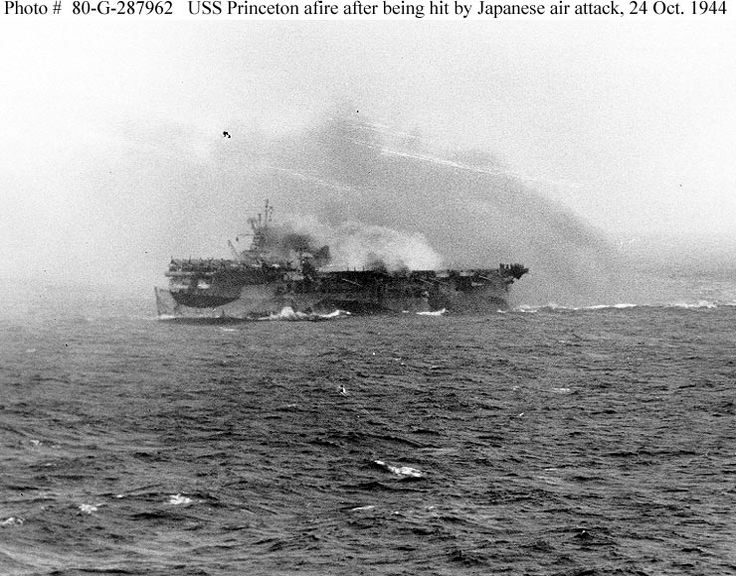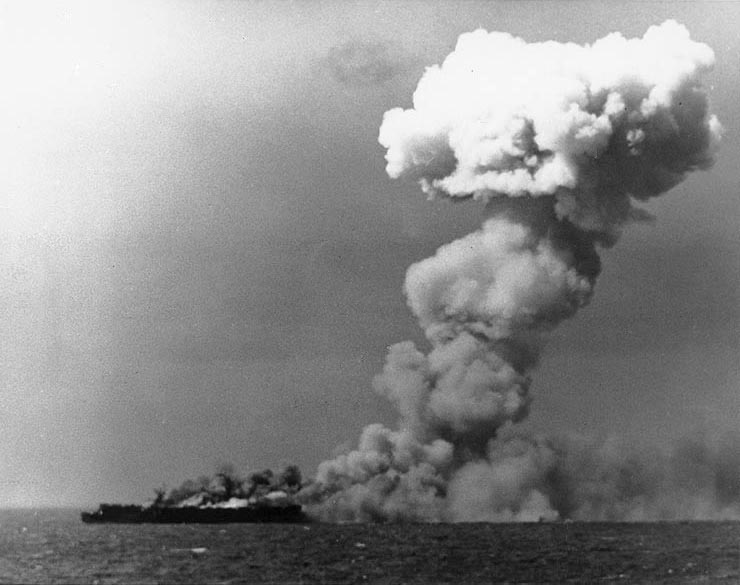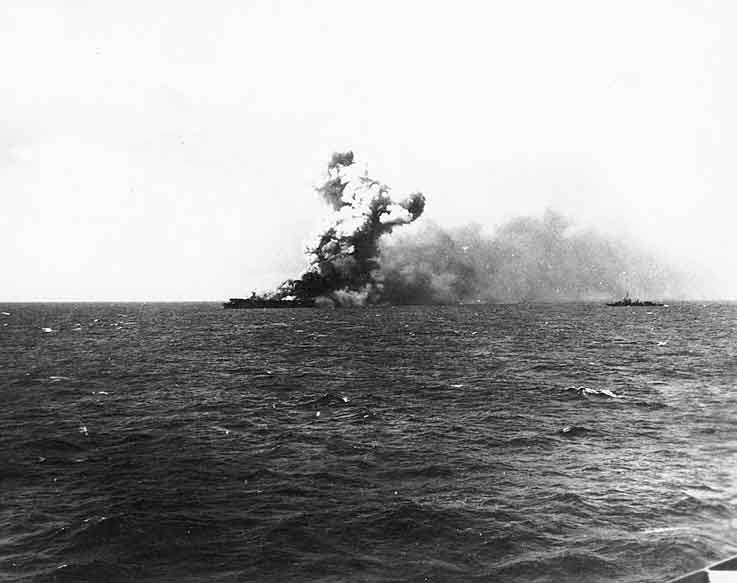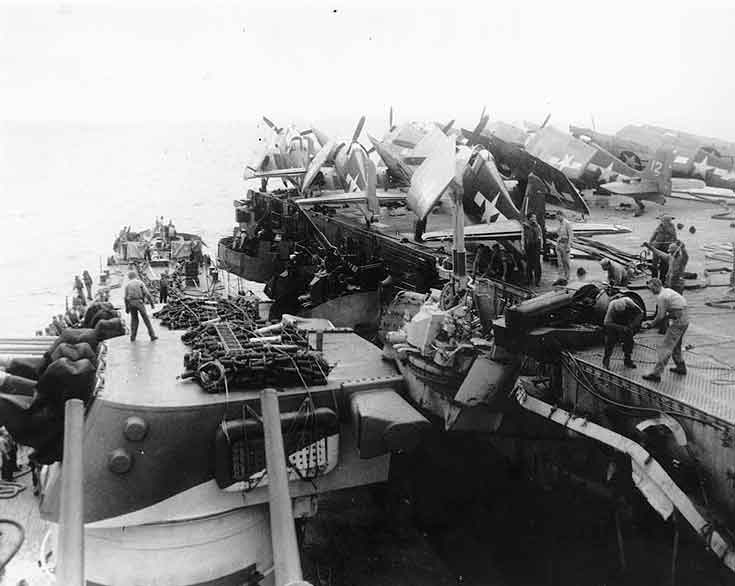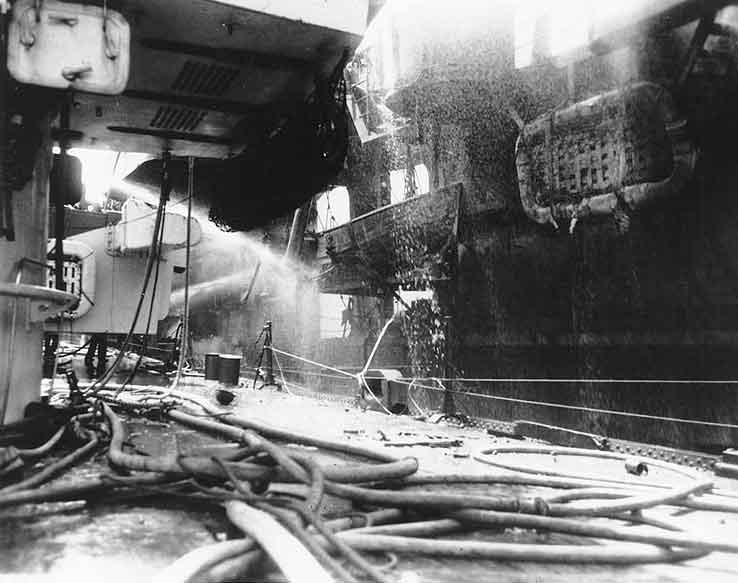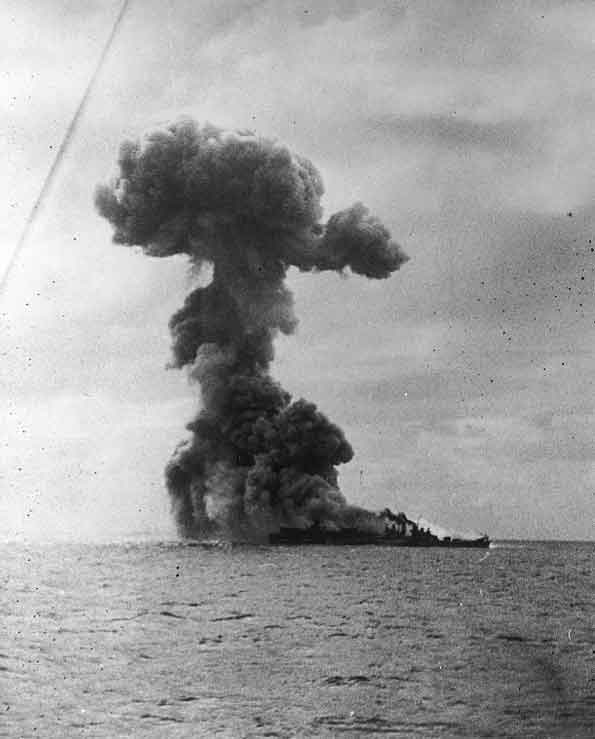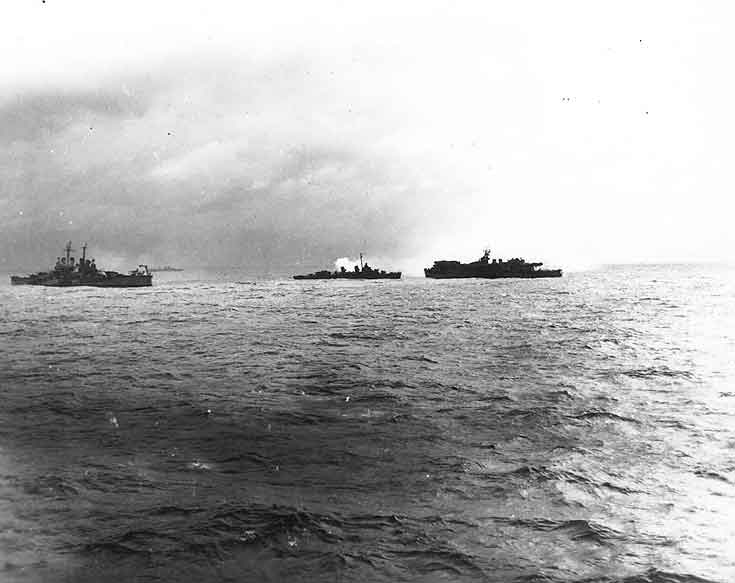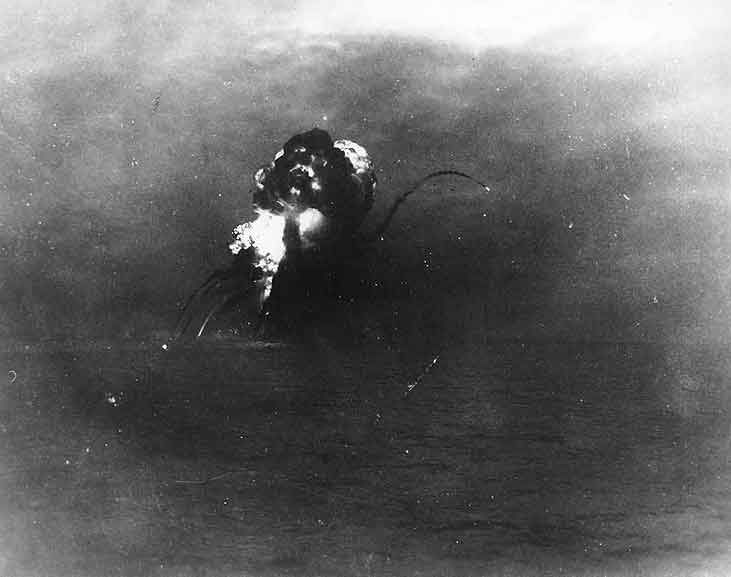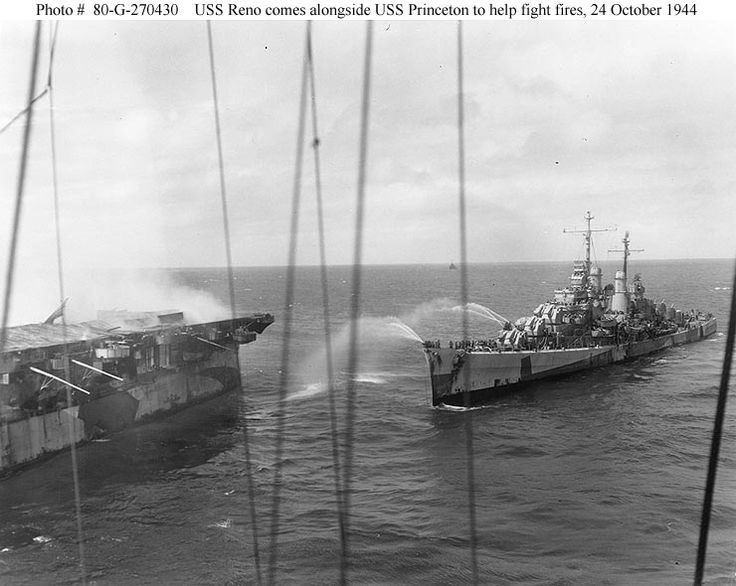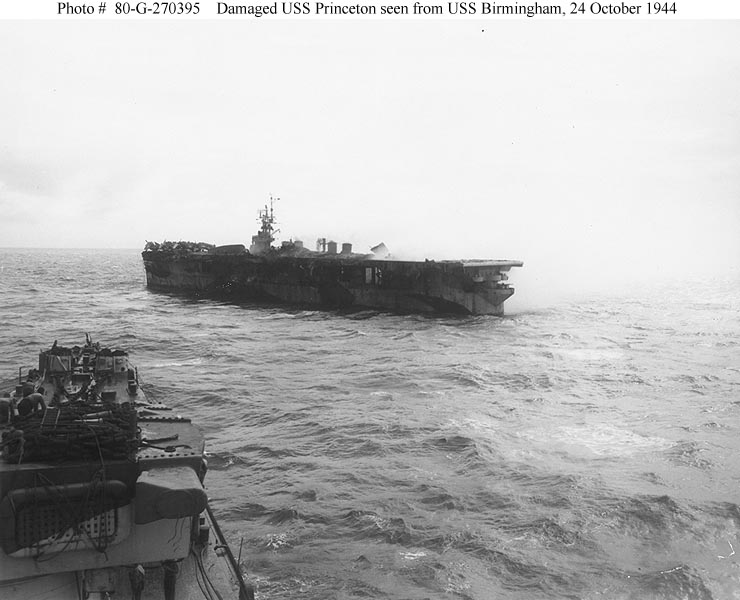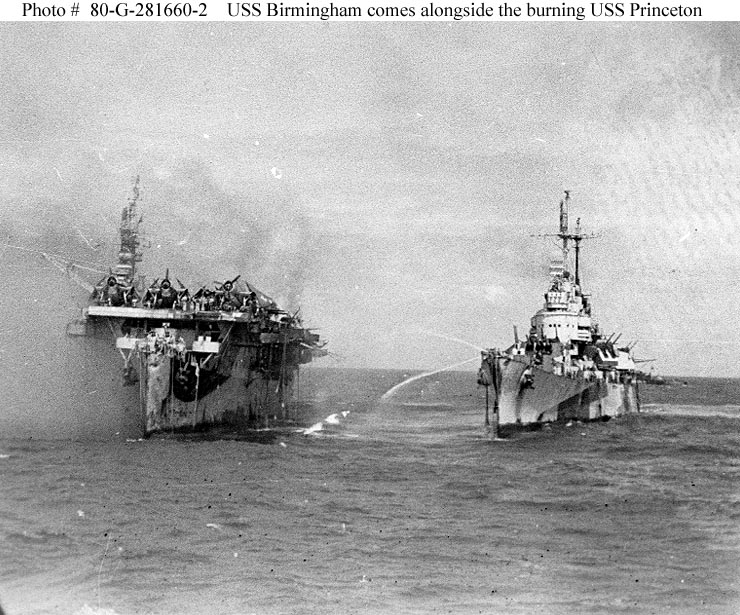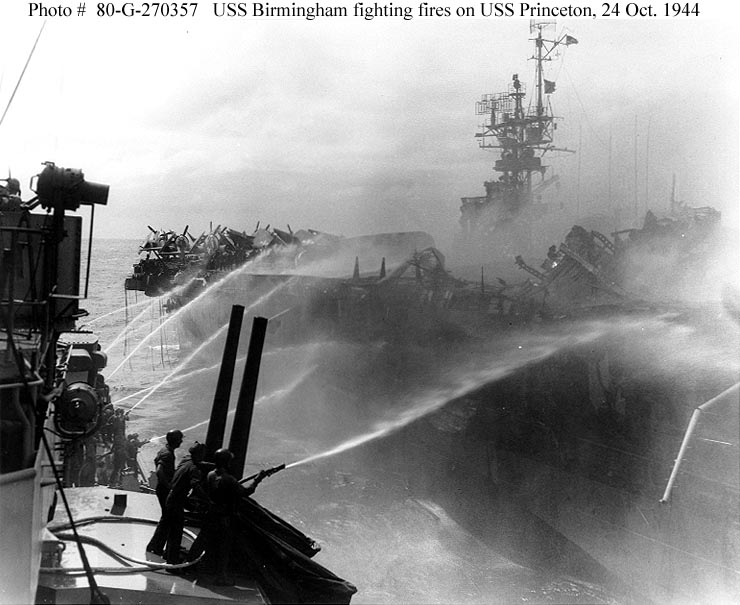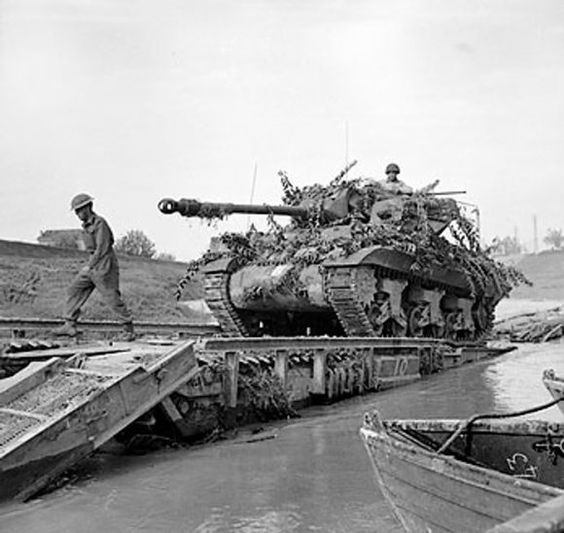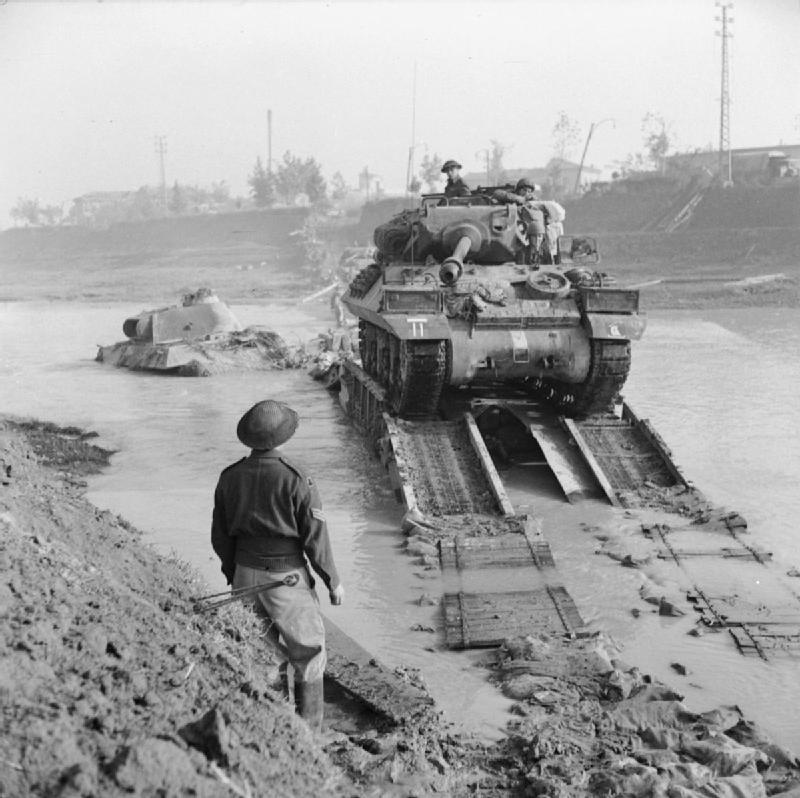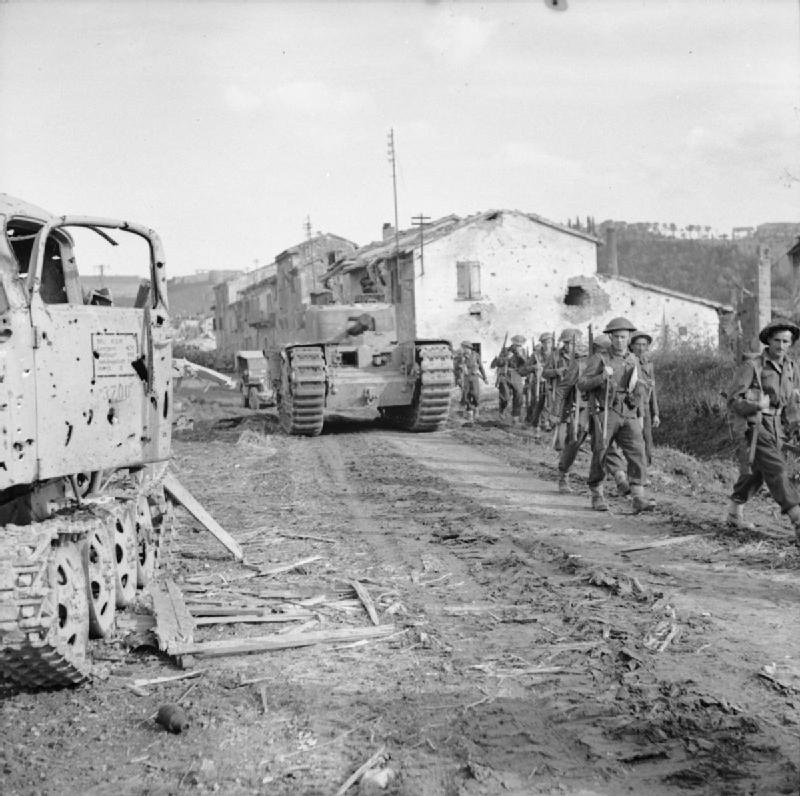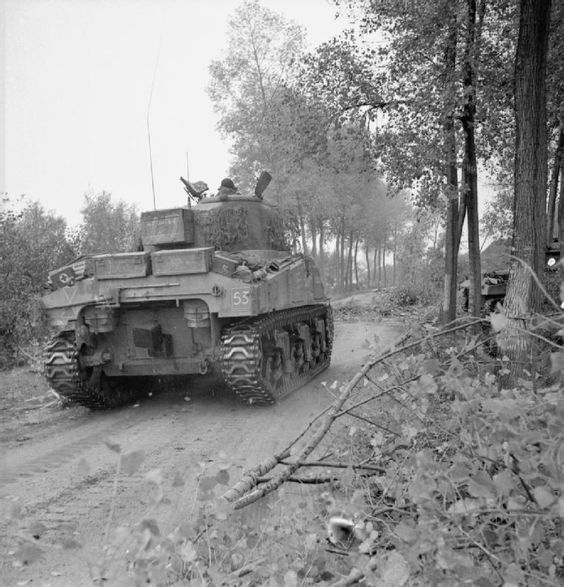Air Operations, Carolines
30th Heavy Bomb Group B-24s attack the Yap Atoll.
[Air Operations, CBI
BURMA- 10th Air Force B-25s and P-47s open an intense four-day campaign in support of offensive operations by Allied ground forces, especially British Army units in northern Burma and Chinese Army units advancing along the MyitkyinaĖBhamo axis. In addition to providing direct support at the front, 10th Air Force aircraft target road nets, rail lines and centers, supply dumps, Japanese Army troop concentrations, and airfields. 14th Air Force fighter-bombers support the effort with strikes into eastern Burma.
- Nearly 80 14th Air Force P-38s, P-40s, and P-51s attack numerous targets in southern China and eastern Burma.
Air Operations, East Indies
- FEAF B-24s, B-25s, and fighter-bombers attack targets in the Sandakan, Borneo area.
- P-38s attack targets in the Amboina area.
Air Operations, Europe
RAF BOMBER COMMANDDaylight Ops:
Minor Ops:
- 2 Wellingtons and 1 Liberator make signals patrols.
Minor Ops:
- 57 Mosquitos are sent to Hannover, 6 to Aschaffenburg and 4 to Oberhausen, 25 Lancasters and 9 Halifaxes lay mines in the Kattegat and off Oslo, 1 aircraft is on a Resistance operation, and there are 11 Mosquito patrols and 3 RCM sorties.
- There are no losses.
GERMANY:
- 379 VIII Fighter Command P-47 and P-51 fighter-bombers attack industrial targets in the Hannover and Kassel areas, and flak emplacements at Elburg.
- 7 fighter-bombers are lost
ITALY:
- The entire 15th Air Force and most of the 12th Air Force are grounded by bad weather, but XXII TAC mounts more than 300 P-47 sorties against communications targets in the Po River valley, shipping in the Genoa and Turin areas and in support of the US 5th Army>
Air Operations, Japan
3 28th Composite Bomb Group B-24s attack Kashiwabara and Kurabu Cape and 2 B-25s attack a freighter and 2 Japanese Navy submarine chasers near Kurabu.
[Air Operations, New Guinea
V Bomber Command A-20s and V Fighter Command fighter-bombers attack numerous targets in the Vogelkop Peninsula area.
[Air Operations, Philippines
At 0800 hours, US carrier aircraft sight the Japanese Navy Center Force and a second surface battle force, the Southern Force. Task Group 38.1, which is more than 600 miles from the rest of Task Force 38, on its way to Ulithi Atoll, is recalled and the three remaining fast carrier task groups are stationed to guard the western entrances to Leyte Gulf.
Beginning at about 0830 hours, an estimated 80 Japanese Army bombers (mostly Ki-21 'Sally' medium bombers and Ki-48 'Lily' light bombers) and fighters attack US shipping in Tacloban harbor on Leyte. Most of the Japanesa Army aircraft are downed by escort-carrier fighters, but a large landing craft and an ocean-going tug are sunk by kamikazes.
During the morning, carrier aircraft from Task Group 38.4 attack the Japanese Navy Southern Force which is on its way toward Surigao Strait and aircraft from Task Group 38.2 (later joined by Task Group 38.4) attack the Japanese Navy Center Force. Neither of the Japanese naval forces is covered by Japanese land- or carrier-based aircraft. The Japanese heavy battleship HIJMS Musashi is sunk by direct hits from at least 10 aerial torpedoes and at least 16 bombs. Also, 2 battleships and 2 cruisers are damaged by the US carrier aircraft. At 1400 hours, the Southern Force turns east in apparent retreat.
Throughout the middle of the morning, Task Group 38.3 is attacked by many Japanese aircraft based on Luzon. While most of the attackers are downed, one bomb hit is scored on the light carrier USS Princeton, which is set afire. Following a massive internal explosion that severely damages a nearby cruiser, she will be scuttled with torpedoes late in the day.
Due to the large number of Japanese aircraft arriving over Leyte Gulf from the south, Task Unit 77.4.1 TBMs and fighters re-open attacks against Japanese airfields in the Visayan Islands, which had been suspended by the escort carriers on October 22. The largest of these strikes, by 12 TBMs and 32 FMs and F6Fs, destroys 6 aircraft on the ground at the Bacolod airfield on Negros. In all, through the day, 84 Task Group 77.4 TBMs and 225 F6F and FM fighter-bombers attack ground targets in the Visayan Islands or support US 6th Army ground forces on Leyte.
In action completely unconnected with the Battle of Leyte Gulf, V Bomber Command B-24s attack the Buayoan airfield on Mindanao. V Bomber Command B-25s attack Japanese Army troops and shipping in the Mindanao area. Also, an advance echelon of the V Fighter Commandís 49th Fighter Group, in 34 P-38s, transfers to the Tacloban airfield on Leyte from Biak Island. These are the first USAAF fighters to reach Leyte.
At about 1330 hours, Task Group 38.3 is attacked by 76 Japanese Navy aircraft, but the attack group is destroyed by US carrier fighters and anti-aircraft guns. Though this attack force has been dispatched from Japanese carriers belonging to a thus far undetected Northern Force, it is believed by US commanders that they are based on Luzon, as was the dayís first attack force dispatched against Task Group 38.3.
VF(N)-41 and VF-44 F6Fs down 1 H8K 'Emily' flying boat, 1 H6K 'Mavis' flying boat, and 1 E13A 'Jake' reconnaissance float plane at sea between 0215 and 0645 hours. US carrier aircraft down 257 Japanese aircraft of all types in intense action running almost without break over the Philippine Sea and several northern and central islands from 0730 to 1510 hours. Carrier-based fighters and one dive-bomber crew down 1 reconnaissance plane, 1 G4M 'Betty' bomber, 3 light bombers, and 6 fighters at sea between 1650 and 1850 hours.
[Battle of Leyte Gulf
Land-based aircraft from Luzon attack Frederick C. Sherman's TG 38.3, fatally damaging the carrier Princeton (CVL-23). Also sunk by in the Japanese air strike is the US ocean tug Sonoma (ATO-12) by a suicide plane. The US submarine Darter (SS-227) runs aground is destroyed by US forces. Kurita's Center Force, now in the Sibuyan Sea, is found by scout planes from TG 38.2 and attacked throughout the day by strike aircraft from the 3 US carrier groups. The battleship Musashi sinks in the early afternoon after taking at least 6 torpedo and 10 bomb hits. The US carrier-based planes also sink the Japanese destroyer Wakaba. One cruiser is also forced to return to base. Kurita turns away because of the weight of the attacks, convincing Halsey that his withdrawal will be permanent. During the evening Kurita again reverses course. Nishimura's Southern Force is also sighted in the approach but takes only negligible damage from the resulting air attacks. Adm Oldendorf who has been leading one of the bombarding squadrons assembles a considerable force in the Surigao Strait to intercept Nishimura. Ozawa's carriers locate Sherman's group and send the majority of their aircraft to attack. They do not find their targets and are forced to land on Luzon. Ozawa has only 25 planes after this. Late in the day Halsey orders his carriers and modern battleships to assemble before moving to attack Ozawa, believing that Oldendorf will handle Nishimura and that Kurita has withdrawn.
US ships damaged in the attempt to help the Princeton (CVL-23) include the light cruiser Birmingham (CL-62) and destroyers Morrison (DD-560, Gatling (DD-671) and Irwin (DD-794). Japanese high-level bombers damage the destroyer Leutze (DD-481) and LST-552. Naval gunfire damages the destroyer Albert W. Grant (DD-649). An aircraft torpedo damages the oiler Ashtabula (AO-51).
[Battle of the Atlantic
U-673 sinks after colliding with U-382 north of Stavanger and beached at Smaaskjaer. The exact circumstances of the incident are unclear.
| Class | Type VIIC |
| CO | Oberleutnant zur See Ernst-August Gerke |
| Location | Norwegian Sea, off Stafanger |
| Cause | Collision |
| Casualties | Unknown |
| Survivors | Unknown |
Burma
The theater of operations, previously unified, is now divided into two, the Indo-Burmese sector under Gen Daniel I. Sultan and the Chinese sector. Command of the latter is temporarily assumed by Gen Claire Chennault, pending the arrival of Gen Albert C. Wedemeyer.
[CBI
The China-Burma-India theater is split into two theaters: China and India-Burma. The headquarters of the 14th Air Force is reassigned from US Army Forces, CBI Theater, to US Forces, China Theater.
[Eastern Front
In Rumania, Russian forces complete the occupation of the whole of Transylvania. The Russians capture Augusto near the East Prussia-Poland border.
NORWAYThe Soviet 10th Guards Rifle Div (CXXXI Rifle Corps) is only a little over 6 miles south of Kirkenes, fighting its wary through a series of iron ore mines.
CENTRAL SECTORThe 4th Army joins the counterattack in East Prussia, supporting the 3rd Panzer Army as it recaptures Gumbinnen from the 11th Guards Army.
[France, Home Front
Louis Renault, automobile manufacturer, dies at the age of 62.
[Germany, Planning
Hitler tells his generals he intends to launch a surprise counteroffensive against the weakest point in the Allied line which turns out to be the Ardennes (see December 13).
[Greece
British troops enter Lamia.
[Italy
The South African 6th Arm Div captures the Passo del Termine and the 78th Div of XIII Corps reinforces its positions on Monte Spadura. Meanwhile the 61st Bde of the British 6th Arm Div reaches Monte Orsaro between the Parma and the Magra.
In the British 8th Army sector the 10th Indian Div advances swiftly toward the Ronco River on the left flank of V Corps.
[Pacific
- The US submarine Tang (SS-306) sinks the Japanese merchant cargo ship Ebara Maru (6957t) in Formosa Strait and damages the tanker Matsumoto Maru, but then is lost by a circular run of one of her own torpedoes north of Formosa.
- The US destroyer escort Richard M. Rowell (DE-403) sinks the Japanese submarine I-362.
- US submarines operate against Japanese shipping in the South China Sea west of Luzon Strait. Drum (SS-228) sinks the merchant cargo ship Shikisan Maru (4725t), Icefish (SS-367) sinks army cargo ship Tenshin Maru (4236t), Seadragon (SS-194) sinks transport Eiko Maru (1843t) and cargo ship Taiten Maru (6442t) and merchant passenger/cargo ship Kokuryu Maru (7369t).
- The US destroyer escort Richard M. Rowell (DE-403) sinks the Japanese submarine I-54 70 miles east of Surigao.
- The US submarine Croaker (SS-246) sinks the army cargo ship Mikage Maru (2761t) and passenger/cargo ship Gassan Maru (6886t) southwest of Quelpart Island.
- The US submarine Darter (SS-227) damaged by grounding on Bombay Shoal, Palawan Passage, P.I., is scuttled by submarines Nautilus (SS-168) and Dace (SS-247) to avoid the boat's falling into enemy hands.
- The US submarine Kingfish (SS-234) sinks the Japanese cargo ship Ikutagawa Maru (2270t) east of Chichi Jima.
- The US submarine Shark (SS-314) is sunk, probably by the Japanese destroyer Harukaze in Luzon Strait. She is listed as overdue, presumed lost, on November 27.
- The US submarine Snook (SS-279) sinks army cargo ships Arisan Maru (6886t) and merchant tanker No.1 Shinsei Maru (5863t) northwest of Luzon. Merchant tanker Kikusui Maru (3887t) sinks as the result of damage inflicted by Snook the day before.
Philippines
A small force from 1st Cav Div crosses the San Juanico Strait from Tacloban to land on Samar at La Paz, setting up a road block on the road to Basey and repelling a Japanese night counterattack. The main body of the division advances north along Highway 1 as far as Guintiguian, the northern entrance to the San Juanico Strait, thus achieving its object of preventing the Japanese 16th Div from moving between Leyte and Samar. Other units from the division advance along the south side of the Strait to Guintiguian. South of Tacloban, in the US XXIV Corps sector, the 383rd Inf Regt of 96th Div has to confine itself to patrol activity for lack of supplies, while the 17th Inf of 7th Div mops up Burauen and advances north toward Dagami. Northwest of San Pablo airfield, near Burauen, the Japanese force back part of the US 32nd Inf.
[United States, Planning
Adm Nimitz provides planning outline for Operation ICEBERG, the invasion of Okinawa. Adm Raymond A. Spruance will be overall commander of the operation. The amphibious force commmander is Vice-Adm Richmond Kelly Turner.
[Western Front
On the Dutch coast the Canadian 2nd Div begins to advance along the isthmus of South Beveland, In Brabant, on the British 2nd Army front, the XII Corps, consisting of 7th Army Div and 53rd Inf Div, reaches 'sHertogenbosch. There is a sudden lull on the fronts of the 3 armies of the 12th Army Group, 1st, 9th and 3rd, while in the south, the 3rd Div of VI Corps steps up its thrusts along the road to St Dié.
The 45th Div of VI Corps advances rapidly to capture the village of Mortagne after house-to-house fighting. Gen De Lattre de Tassigny, Commander of the French 1st Army, issued directives for Operation INDEPENDENCE, the capture of Belfort in southeast France. Belfort is not far from the Swiss border on the road leading from Strasbourg through Mulhouse to Lyons.
[Images from October 24, 1944
|
|
|
|
|
|
|
|
|
|
|
|
|
|
|
|
